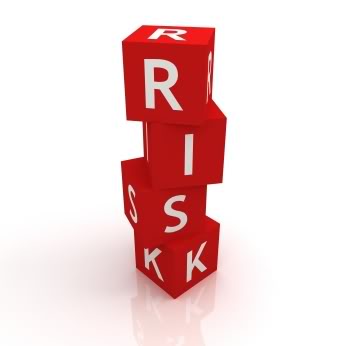Pennsylvania to Control Emissions from the Use of Adhesives, Sealants, Primers, and Solvents
The Pennsylvania Environmental Quality Board (EQB) has proposed regulations that would control emissions from the use of adhesives, sealants, primers, and solvents. The proposed rulemaking would regulate the owner or operator of a facility or stationary source that uses or applies a regulated adhesive, sealant, adhesive primer, or sealant primer product. Emission standards and volatile organic compound (VOC) content limits have been proposed for the industrial or commercial use or application of 37 adhesive, sealant, adhesive primer, or sealant primer product categories, and adhesive or sealant products applied to particular substrates. Requirements for the use of surface preparation solvents and cleanup solvents are also included.
Also proposed are emission standards and VOC 
The proposed regulations can be viewed here.
Comments regarding the proposed regulations are due to the EQB by June 8, 2009.
Risk Management Program – Release of RMP*eSubmit and Other Guidance
For many facilities subject to the Risk Management Program provisions of 40 CFR Part 68 that were required to submit a Risk Management Plan (RMP) by the initial 1999 compliance date, a 5-year update is due this year. On March 13, 2009, U.S. EPA released the newest software for submitting a new or updated RMP: RMP*eSubmit. The new RMP*eSubmit software and additional guidance information is available at the following U.S. EPA website:
http://www.epa.gov/oem/content/rmp/rmp_esubmit.htm#more.
RMP*eSubmit will replace RMP*Submit 2004, which will be phased out in 2009. U.S. EPA encourages facilities to use RMP*eSubmit. However, U.S. EPA will accept an updated RMP using RMP*Submit 2004 from facilities that have already begun preparing their RMP submittals. Those facilities that were required to complete the Chemical Facility Anti-terrorism Standards (CFATS) Chemical Security Assessment Tool (CSAT) in 2008 (as described in ALL4’s August 2008 4 The Record article “Chemical Facility Anti-terrorism Standards (CFATS) Deadline Approaching“), may recognize some of the same registration features in RMP*eSubmit that accompanied the CSAT Top-Screen submittal.
Even if your facility’s RMP is not due until June 2009, there are several tasks that should be completed now:
- Register the Certifying Official in the Central Data Exchange (CDX) (http://cdx.epa.gov).
- Complete the Electronic Signature Agreement (ESA) and mail it back to U.S. EPA. The ESA is used to verify that the Certifying Official reviewed and submitted the EMP in the RMP*eSubmit system.
- Register the “Preparer” and activate RMP*eSubmit access in CDX. The Certifying Official may designate another person as the Preparer. In this case, the Certifying Official may provide the Preparer with the Authorization Code for the facility. Preparers are then required to provide the Authorization Code when registering and activating their RMP*eSubmit access in CDX.
U.S. EPA Proposes Air Toxics Standards for Reciprocating Internal Combustion Engines (RICE)
On February 25, 2009, U.S. EPA released proposed National Emissions Standards for Hazardous Air Pollutants (NESHAPs) for stationary Reciprocating Internal Combustion Engines (RICE) that are not currently regulated by the existing, so called, RICE MACT (i.e., 40 CFR Part 63, Subpart ZZZZ) promulgated in 2004. The proposed rule would establish limits for emissions of carbon monoxide (CO) and formaldehyde (CH2O) for:
- RICE that are located at area sources of air toxics emissions,
- RICE with site ratings of less than or equal to 500 brake horsepower (bhp) located at major sources of air toxics emissions that were constructed or reconstructed before June 12, 2006, and
- RICE with site ratings of greater than 500 bhp located at major sources of air toxics emissions that were constructed or reconstructed before December 19, 2002.
RICE affected by the proposed rule are primarily located 
U.S. EPA will accept comments on the proposed RICE rule until April 26, 2009 (i.e., 60 days following the February 25, 2009 publication of the proposed rule in the Federal Register).
PADEP to Propose Substantial Air Fee Increases and New Air Fees for 2010 and Beyond
At the February 12, 2009 Air Quality Technical Advisory Committee (AQTAC) meeting, the Pennsylvania Department of Environmental Protection (PADEP) introduced proposed new amendments to Chapters 127 and 139 of the State’s air regulations. The proposed changes to Chapter 127 affect Subchapter I, the Plan Approval and Operating Permit Fees. The proposed changes to Chapter 139 create a new Subchapter D entitled Testing, Auditing, and Monitoring Fees. The revised and new sections of these rules include substantial increases in current fees for various types of Plan Approvals and Operating Permits and create new fees for PADEP efforts associated with reviewing and/or taking action on a variety of submittals required of regulated sources.
The various fee increases and new fees are proposed for three (3) separate time frames: 2010 to 2014, 2015 to 2019, and 2020 and beyond. Some examples of the changes include increasing the fee for a simple Plan Approval from $1,000 to $1,300 in 2010, and to $2,000 by 2020; increasing the fee for a Prevention of Significant Deterioration (PSD) application from $22,700 to $27,200 in 2010, and to $30,000 by 2020. There will be new fees for items such as the Request for Determination (RFD) forms and substantial charges for any PADEP efforts associated with reviewing air quality modeling and risk assessments. The annual Title V emission fee is proposed to increase to $70 per ton on January 1, 2010.
The biggest surprise in the proposed rule revisions is the establishment of new fees in Chapter 139. Sources will be charged for everything from reviewing stack test protocols and test reports, to observing and/or having PADEP conduct tests. A number of fees are also proposed for sources that operate continuous emission monitoring systems (CEMS). The fees vary based on the CEMS related activity and virtually everything reviewed by 
AQTAC voted 9-1-2 to present the proposed fee schedule to the Pennsylvania Environmental Quality Board (EQB) for consideration as an adopted regulation. The EQB’s next scheduled meeting is on April 21, 2009. If the rules are promulgated as proposed, regulated sources will need to look closely at the new fees and consider the overall cost impacts when it comes time for preparing 2010 operating budgets.
Draft Greenhouse Gas Cap and Trade Bill Released by Congress
On March 31, 2009, Democrats in Congress released a discussion draft Greenhouse Gas (GHG) cap and trade bill that would cover 85% of U.S. GHG emissions. The bill, entitled “The American Clean Energy and Security Act of 2009,” is comprised of four titles: Title I – Clean Energy, Title II – Energy Efficiency, Title III – Reducing Global Warming Pollution, and Title IV – Transitioning to a Clean Energy Economy. Title III of the bill is of particular interest as it identifies two new titles under the Clean Air Act: Title VII – Global Warming Pollution Reduction Program and Title VIII – Additional Greenhouse Gas Standards.
The Title III provisions of the draft bill are apparently based on the recommendations of the U.S. Climate Action Partnership (USCAP) and establish a market-based program to reduce GHG emissions from industrial and electric utility sources that account for 85% of domestic GHG emissions. Entities emitting more than 25,000 tons per year of CO2 equivalent (CO2e) would be subject to the allowance program. However, sources that emit 10,000 tons per year CO2e will only be required to report emissions. The market-based program would require regulated entities to possess allowances for each ton of their GHG emissions. The available allowances would decline over time, resulting in aggregate GHG emission reductions. The allowance program would establish 2005 as the baseline year, against which required aggregate GHG reductions would be measured.
Title III also establishes:
- Offset provisions, which would allow regulated entities to increase emissions above their allowances if the increases can be offset by reductions at other sources.
- A Strategic Reserve of allowances to be made available by auction should allowance prices become unacceptably high.
- An allowance “Banking” system, which would allow facilities to bank allowances for use during future compliance years.
- A Supplemental Pollution Reduction program that would achieve additional reductions in GHG emissions through agreements to prevent deforestation.
- Carbon Market Oversight through the Federal Energy Regulatory Commission.
- GHG Standards for non-allowance sources.
Finally, Title III of the draft includes a provision specifying that CO2 and other GHGs 
U.S. EPA Names Priority Schools for Monitoring Toxic Outdoor Air Pollution
On March 31, 2009, U.S. EPA announced a list of priority schools that will undergo outdoor air monitoring. State and local agencies will work together with U.S. EPA to monitor air toxics around 62 schools that are located near large industrial facilities or in urban areas. These schools were identified for monitoring based on available information about air pollution in the vicinity of the schools, results of a computer modeling analysis, results from a recent newspaper analysis, and information from state and local air agencies.
Monitoring of outdoor air at some of the schools on the list will begin almost immediately, while monitoring at the remaining schools will begin over the next 60 to 90 days. Monitors will be operated over a period of 60 days during which samples will be collected on 10 different days. The monitors will measure gaseous pollutants, such as benzene, and particulate pollutants, including metals such as hexavalent chromium, manganese, or lead. The pollutants monitored will vary by school, based on the available information about the pollution sources in the area. Equipment to measure wind speed and direction will also be installed at each school during the monitoring.
U.S. EPA will analyze the results of the monitoring and share the information with the 
The list of schools included in the monitoring initiative can be found at http://www.epa.gov/schoolair/schools.html.
(For related information, refer to ALL4’s December 2008 4 The Record for our article titled “USA Today Article “Toxic Air and America’s Schools”: How is your company depicted?”)


